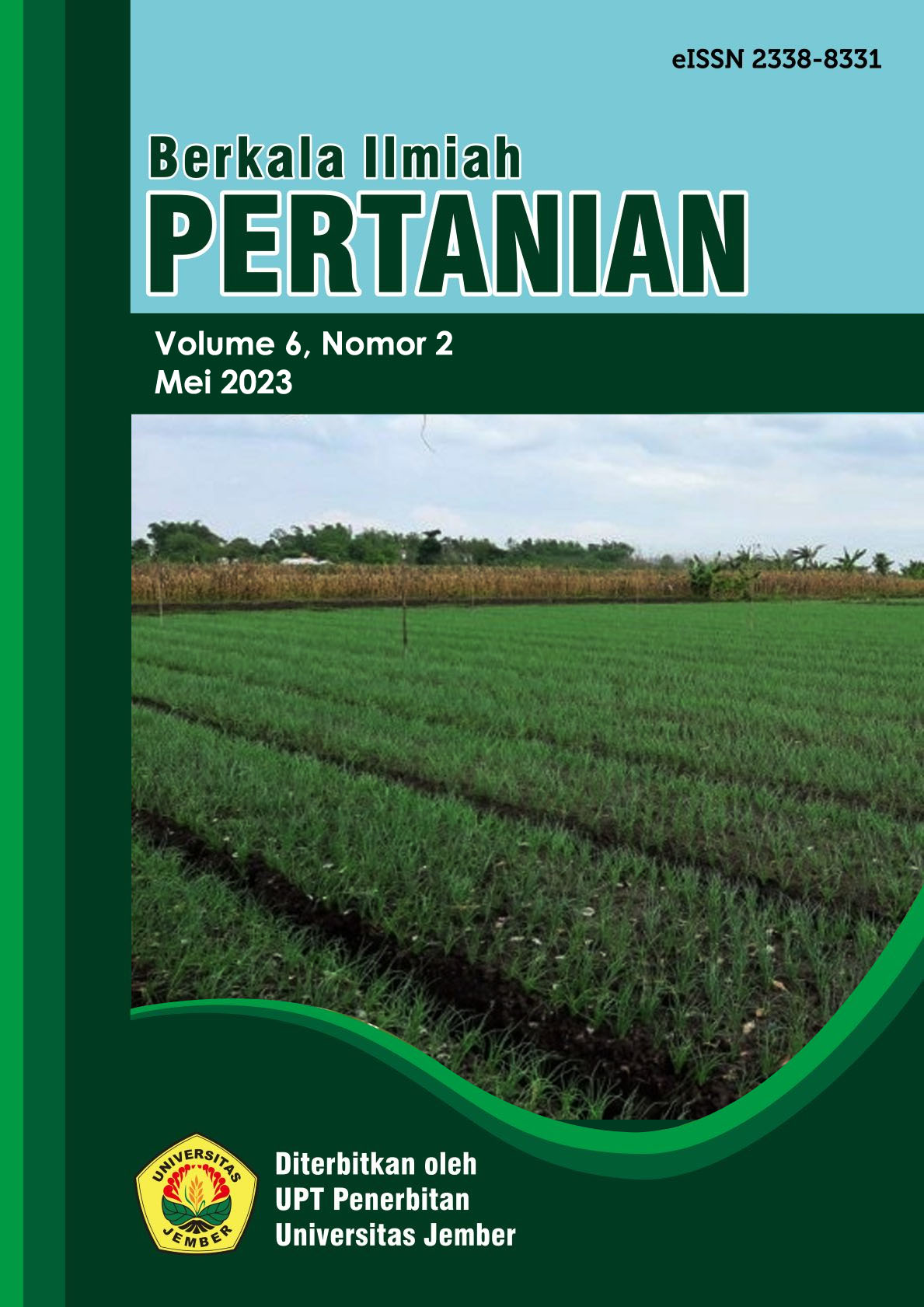Intensitas Serangan Wereng Batang Coklat (Nilaparvata lugens) Pada Beberapa Varietas Tanaman Padi di Kecamatan Kedungadem Kabupaten Bojonegoro
DOI:
https://doi.org/10.19184/bip.v6i2.37390Abstract
Rice (Oryza sativa L) is a food crop that is used as a staple food source and is an agricultural product that has a strategic and economic role in Indonesia. Bojonegoro is one of the districts that is a food barn in East Java Province. One of the things that can result in decreased rice crop production is the attack of Plant Pest Organisms (OPT). One of the pests that can cause attacks and damage to rice plants is the brown planthopper pest (Nilaparvata lugens). One example of brown planthopper pest attack in Bojonegoro Regency is located in Kedungadem District. The problems that arise due to leafhopper pest attacks on rice plants, need to know the bioecology of planthopper pests and their population density, so as to facilitate proper prevention and control measures, so that the pest population does not cross the economic threshold. This study aims to determine the intensity of attack by the brown planthopper (Nilaparvata lugens) on several varieties of rice plants in Kedungadem District, Bojonegoro Regency. The method used is direct observation every 1 week starting from 1 WAP to 12 MST and counting the brown planthopper pests found in the field. The villages used in the study were Jamberejo Village and Sidomulyo Village with 6 plots of land in each village. In each village, 3 samples of Ciherang variety and 3 fields of Inpari 32 variety were taken. he highest intensity of brown planthopper attacks in Sidomulyo and Jamberejo Villages was in week 7 with attack intensity in Sidomulyo Village of the Ciherang variety, Sidomulyo of the Inpari 32 variety, Jamberejo of the Ciherang variety, and Jamberejo of the Inpari 32 variety respectively were 21%, 17%, 17%, and 13% while the lowest attack intensity was in week 1 with an attack intensity of 0%.
Downloads
Downloads
Published
Issue
Section
License
Authors who publish with this journal agree to the following terms:
1.Authors retain copyright and grant the journal right of first publication with the work simultaneously licensed under a Creative Commons Attribution-NonCommercial 4.0 International License that allows others to share the work with an acknowledgement of the work's authorship and initial publication in this journal.
2.Authors are able to enter into separate, additional contractual arrangements for the non-exclusive distribution of the journal's published version of the work (e.g., post it to an institutional repository or publish it in a book), with an acknowledgement of its initial publication in this journal.
3.Authors are permitted and encouraged to post their work online (e.g., in institutional repositories or on their website) prior to and during the submission process, as it can lead to productive exchanges, as well as earlier and greater citation of published work (See The Effect of Open Access).




















